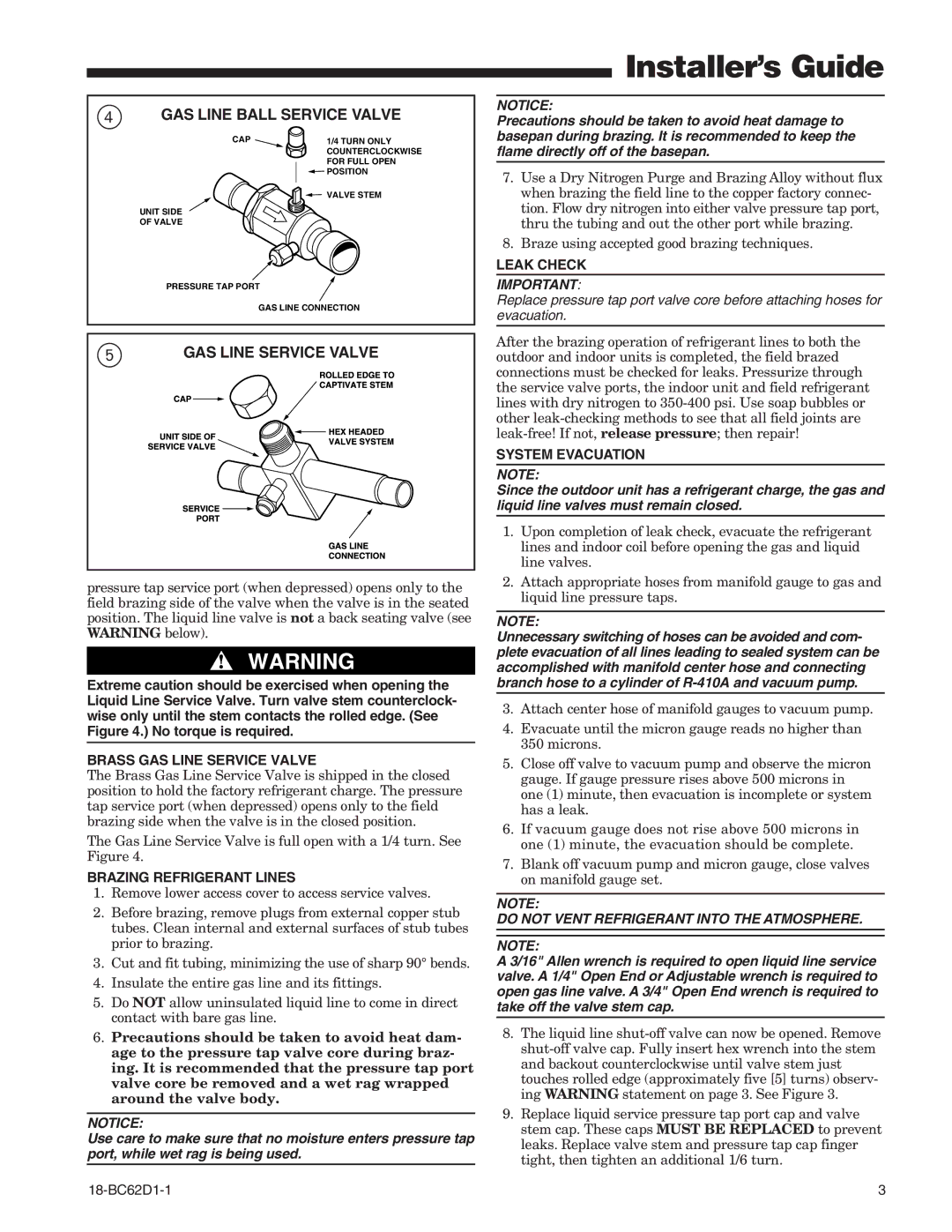4TWA3 specifications
The Trane 4TWA3 is a highly efficient air conditioning unit designed to provide exceptional cooling performance for residential and light commercial applications. Known for its advanced technology and innovative features, the 4TWA3 has become a popular choice among homeowners looking for reliable climate control.One of the standout features of the Trane 4TWA3 is its variable-speed compressor. This technology enables the unit to adjust its cooling capacity based on the current temperature and humidity levels, ensuring optimal comfort while maintaining energy efficiency. By operating at varying speeds, the compressor uses less energy compared to traditional single-speed units, ultimately resulting in lower utility bills.
The efficiency of the Trane 4TWA3 is reinforced with its SEER (Seasonal Energy Efficiency Ratio) rating, which typically ranges from 14 to 16. This rating indicates how effectively the system converts electricity into cooling power, allowing homeowners to enjoy a more cost-effective and environmentally friendly cooling solution. Additionally, the unit is equipped with an environmentally friendly refrigerant, R-410A, which helps reduce ozone depletion.
Another notable characteristic of the 4TWA3 is its robust construction, featuring a durable, weather-resistant cabinet designed to withstand various outdoor conditions. This ensures longevity and reliability throughout its operational lifetime. The cabinet's design also aids in reducing noise levels, making the system quieter compared to competitors while maintaining high performance.
The Trane 4TWA3 also incorporates a user-friendly control system, enabling homeowners to easily manage their indoor climate. With advanced thermostat options, including programmable and smart thermostats, users can customize their cooling schedules, further enhancing energy savings.
Moreover, installation and maintenance of the 4TWA3 are straightforward, with Trane offering comprehensive support through their network of certified professionals. This ensures that the unit performs at its best for years to come.
In conclusion, the Trane 4TWA3 combines advanced technology with high efficiency, robustness, and user-friendly features. Its variable-speed compressor, impressive SEER rating, durable construction, and smart control options make it an exceptional choice for those seeking reliable and effective air conditioning solutions. Whether for residential or light commercial use, the 4TWA3 stands out as a testament to Trane's commitment to quality and performance in modern climate control systems.

